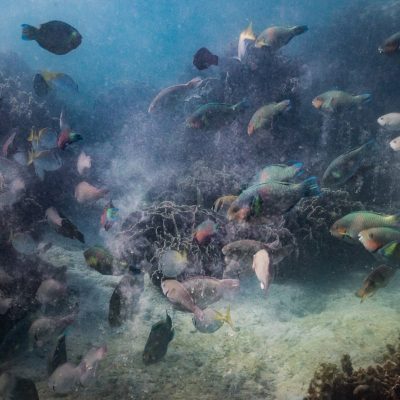
Visualizing the Climate Crisis:
Ocean Acidification
This is the first talk of a new series, Visualizing the Climate Crisis, which explores the potential and the role that contemporary photography, together with different disciplines, can have in addressing the multi-layered theme of climate change. The series will feature visual journalists doing evidence-based, research-informed, image-led reporting on climate issues. They will be in conversation with other professionals representing a diverse range of disciplines, such as science, policy-making, education, architecture, social innovation, media, and more, trying to explore the possibility of thinking beyond photography in a genuinely trans-disciplinary approach to expand reach, involve the wider public, and move people from being inspired to taking action.
This event features Katherine Jack (photographer) and Octavio Aburto (research scientist), in conversation with Maria Teresa Salvati (founder and director of Everything is Connected), moderated by Paul Lowe (Reader in Documentary Photography at UAL, London).

Ph. Credit Katherine Jack
What is ocean acidification?
Ocean acidification is a change to the ocean’s chemistry produced by rising levels of carbon dioxide (CO2). The ocean absorbs about 30 percent of the CO2 that human activity releases into the atmosphere, and as levels of atmospheric CO2 increase, so do the levels in the ocean. When CO2 is absorbed by seawater, a series of chemical reactions occur that damage structures such as sea shells and coral skeletons. This harms calcifying organisms such as oysters, clams, sea urchins, shallow-water corals, deep-sea corals, and calcareous plankton. When these organisms are at risk, the entire food web may also be at risk.
How can this phenomenon be visualized? How can visual storytellers work with scientists and develop a narrative that shows the problem and points the way toward solutions? What messages can have a tangible impact on a local and global level? How can we communicate the connection between issues in the Atlantic Ocean, the corals in the Philippines? and life and habits in Europe?
This series is organized by Everything is Connected, UAL, University of the Arts London and VII Insider.
Through the eyes of children
Education – Public Space – Social Innovation – Visual Art
Do we live on or are we part of a planet? - Frederic Hanusch
Education – Science
Planetary Health and Visual Culture - David Cross
Education – Science – Visual Art
The need for a Xenourbanism - Rossella Ferorelli
Education – Public Space – Science
Secret Sarayaku - Misha Vallejo
Education – Social Innovation – Visual Art
Photography and the climate emergency - Symposium III
Education – Science – Visual Art
Empathy and Connection in Environmental Storytelling
Education – Science – Visual Art
Beyond photographic limits - L. Fritz Magazine
Mass Media – Visual Art
Alternative Aesthetics in Environmental Storytelling
Education – Science – Visual Art
How to make the invisible, visible? AIR by Marina Vitaglione
Science – Visual Art
Towards Trans-disciplinarity
Education – Public Space – Science – Visual Art
How photography can address climate crisis as a social justice issue
Education – Mass Media – Visual Art
Contemporary Photography
and Public Engagement
Education – Public Space – Science – Social Innovation – Visual Art
Visualizing the Climate Crisis:
Virtual Water
Education – Science – Visual Art
Visualizing the Climate Crisis:
the Fashion System
Education – Mass Media – Visual Art
